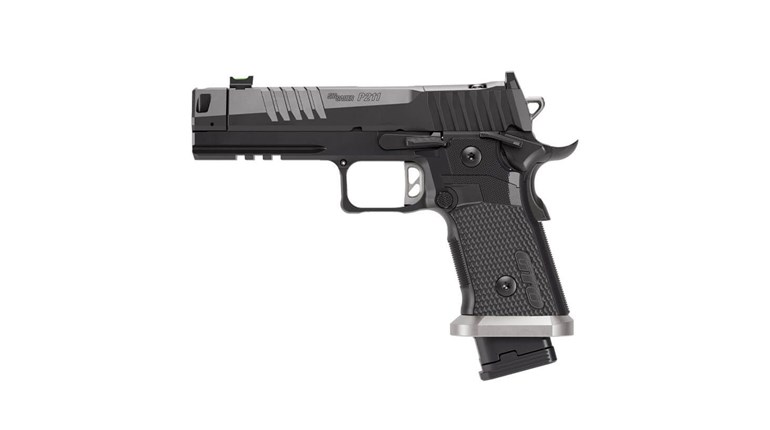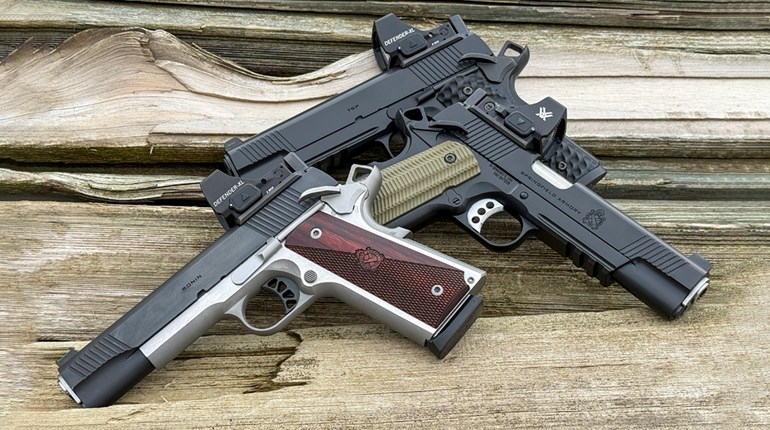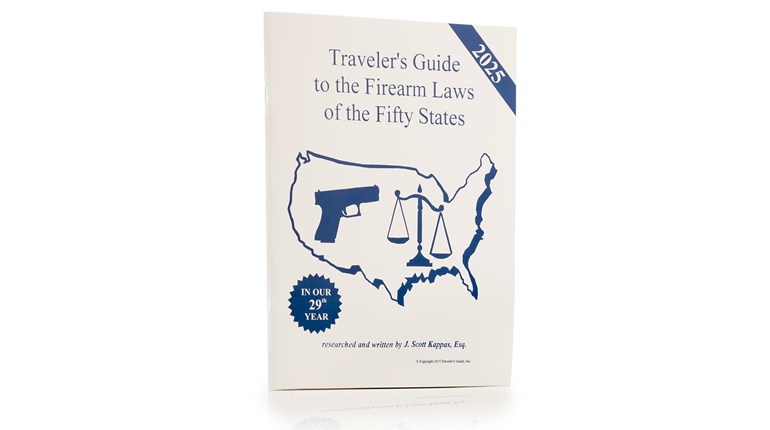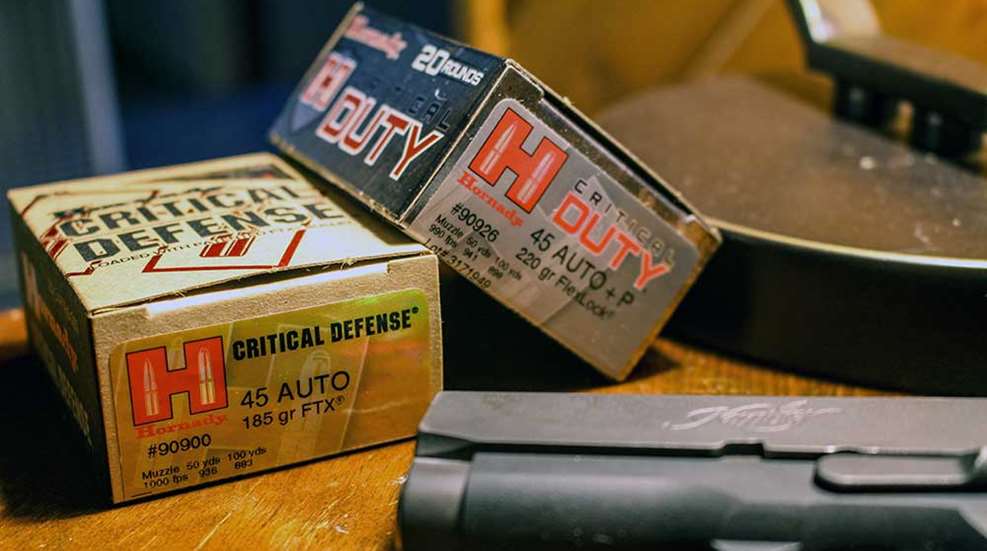
The brand labeling of ammunition can be confusing to the consumer; a shiny logo and photo may not completely indicate the intended use for the product, and it may require a bit of extensive research to obtain the desired results. Hornady, long famous for its excellent component bullets, and more recently, its equally superb ammunition, has a few different brands of handgun ammunition. Let's examine the differences and common threads between the Critical Defense and Critical Duty lines of personal-defense handgun ammo.
Critical Defense vs. Critical Duty: Similarities
First, let’s look at the similarities. Both ammo options share the Hornady Flex-Tip bullet, an excellent design that has proven itself in FBI protocol testing. The bullet itself is a cup and core hollowpoint, with the cavity filled with the same flexible material that Hornady uses in the FlexTip bullets for its LeveRevolution ammunition. The jacket is held to the core by means of Hornady’s InterLock groove. While it may seem to be a simple crimping groove from the outside, it serves to maintain structural integrity.
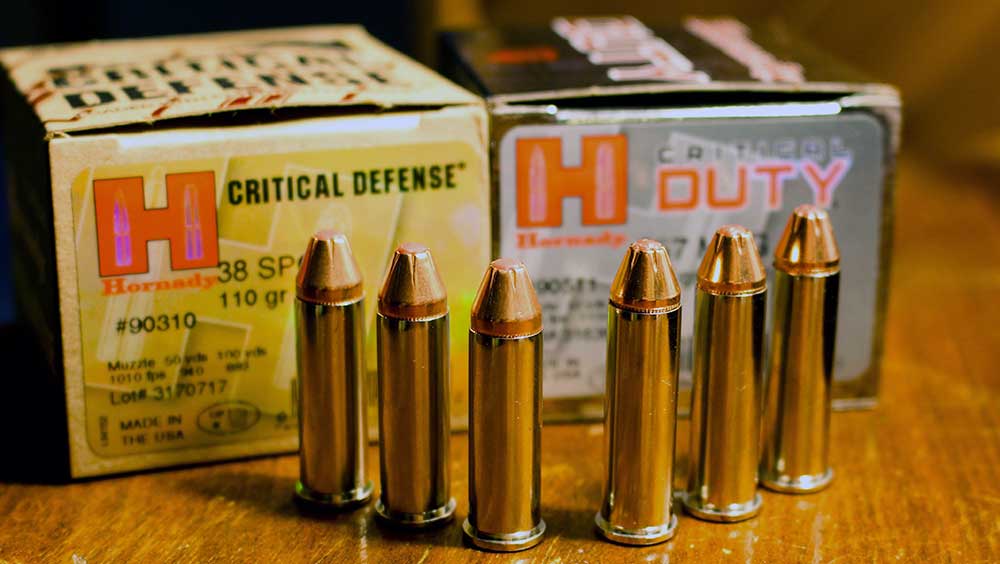
The Flex Tip insert in the company's LeveRevolution ammo prevents any chance of detonation in the tubular magazines of lever action rifles. However, the insert serves a different purpose in the Hornady handgun ammunition. The tip is flush with the mouth of the hollowpoint, and upon impact, it acts as a blocking agent to prevent any foreign materials from plugging the cavity, which can hinder expansion. Then it acts like as a wedge, driving the sidewalls out to allow the bullet to expand—but that’s not all. During the expansion, the Flex Tip grows in diameter to assist bullet expansion during the terminal phase. The lead core of the bullet has a high antimony content to ensure deep penetration.
All in all, the Flex-Tip is a good bullet design that will deliver its promises. Both Critical Duty and Critical Defense are loaded in nickel-plated cases, which avoid corrosion from sweaty hands and are the easiest to identify during a chamber check.
Critical Defense vs. Critical Duty: Differences
That is where the similarities end, and the two product lines fulfill very different roles. The Critical Defense line is built around smaller, shorter-barreled concealed-carry handguns. It uses lighter bullets than does the Critical Duty line, and the powder charges are optimized to perform best with a short-barreled handgun. Low muzzle flash and low muzzle rise are both important factors for the handgunner who carries an easily concealed handgun.
When thinking of the Critical Defense line, think close-quarters defense with a small pistol. The Critical Duty line uses heavier bullets and a powder charge better suited to full-size handguns; these are the full-house loads that can generate excessive recoil in the compact guns, yet feel and perform great in a larger, heavier gun. When it comes to the Critical Duty line, think of law-enforcement officers and security guards who carry a full-sized handgun. Let’s look at a couple of examples.
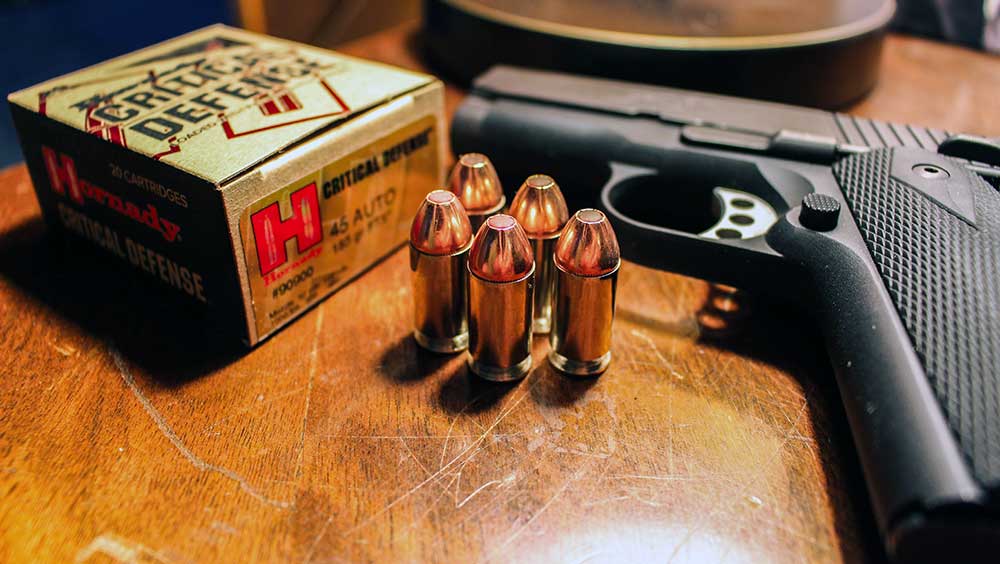
The .45 ACP is, without question, one of our most popular and effective handgun cartridges for personal-defense use. In Hornady’s Critical Duty line, the .45 ACP load is built around the 220-grain Flex-Lock bullet at a muzzle velocity of 975 fps, a rather common load. The Critical Defense load for Mr. Browning’s brainchild uses a 185-grain Flex-Lock bullet, which leaves the muzzle of a 5-inch barrel at an even 1,000 fps, but when fired from one of the compact .45s—with a three-inch barrel—will be moving at only 900 fps. The lesser velocity will invariably result in less muzzle jump, getting you back on target as quickly as possible.
Like the .357 Mag.? The Critical Duty line—built around the 135-grain Flex-Lock bullet at 1,275 fps—can be your powerhouse load and will couple well with the lighter .38 Spl. Critical Defense load, using the 110-grain Flex-Lock at 1,010 fps, or even better in a long-barreled pistol.
Hornady's Take on Critical Defense vs. Critical Duty
I rang up my buddy Neal Emery, marketing operations manager at Hornady, for the official explanation on the differences between the two product lines. Neal put it to me this way:
"The Critical Duty ammo is made primarily for full sized duty/tactical handguns. It’s specifically made to perform well on the FBI protocol test, which scores the highest for 12-18 inches of penetration, with expansion, into bare gel and also through barriers like auto glass, heavy clothing, wall board and sheet metal. It’s quite a tall order to expect similar penetration results through all or none of the barriers, but the Duty round routinely surpasses expectations. The Critical Defense ammo is specifically made for short, concealed carry guns for positive expansion and penetration through heavy clothing. The tougher tactical style rounds don’t always perform as well with the slower velocities of short-barreled guns, and we’ve worked hard to solve that issue."
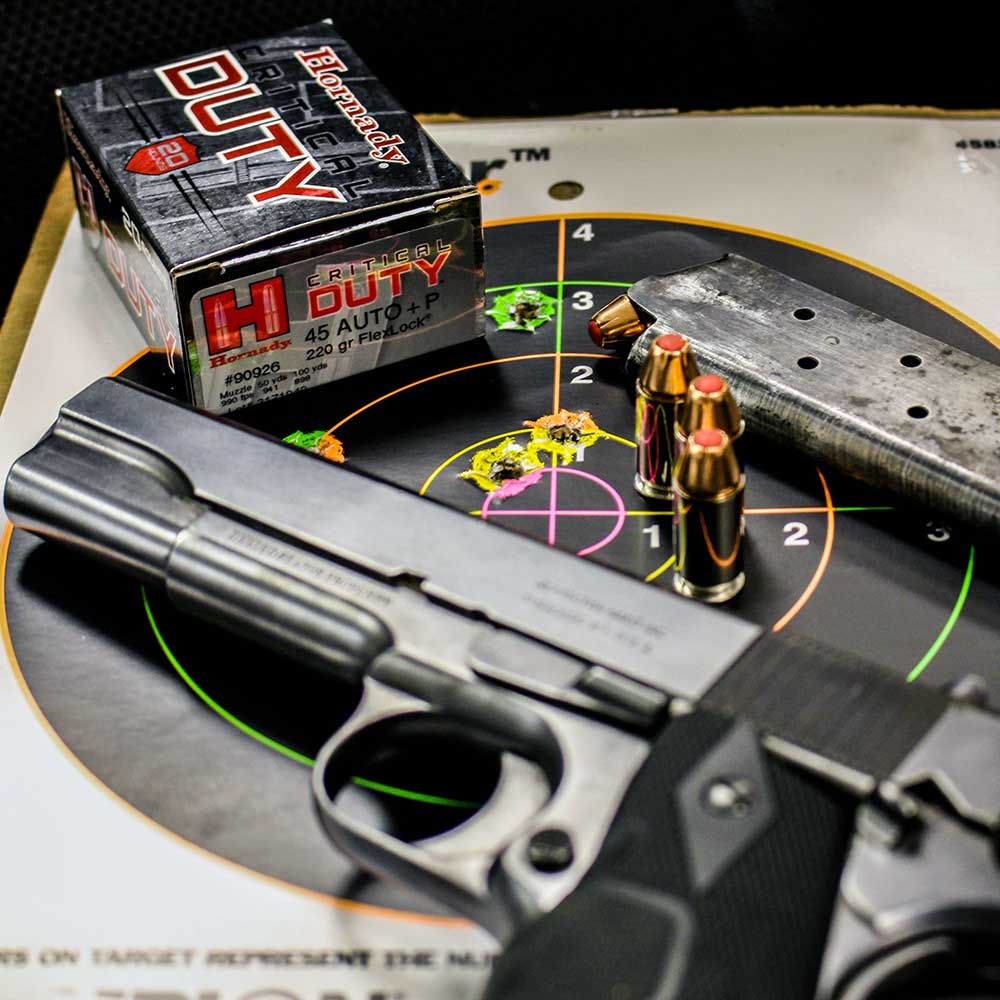
So what we’ve got is a different level of performance properly suited to different types of handguns. If you prefer full-size guns, both product lines are open to you. Think of the lighter Critical Duty as a good means of practicing with less recoil and velocity or a tool for situations where less muzzle jump may be advantageous to you. If you prefer some of the smaller carry guns—my Smith & Wesson Model 36 snubnose .38 Spl. gets the nod more often than not—the Critical Defense makes a perfectly sound choice, giving the optimal terminal performance in those compact designs. Give the Hornady stuff a whirl. I’d bet you’ll be happy with the results.













